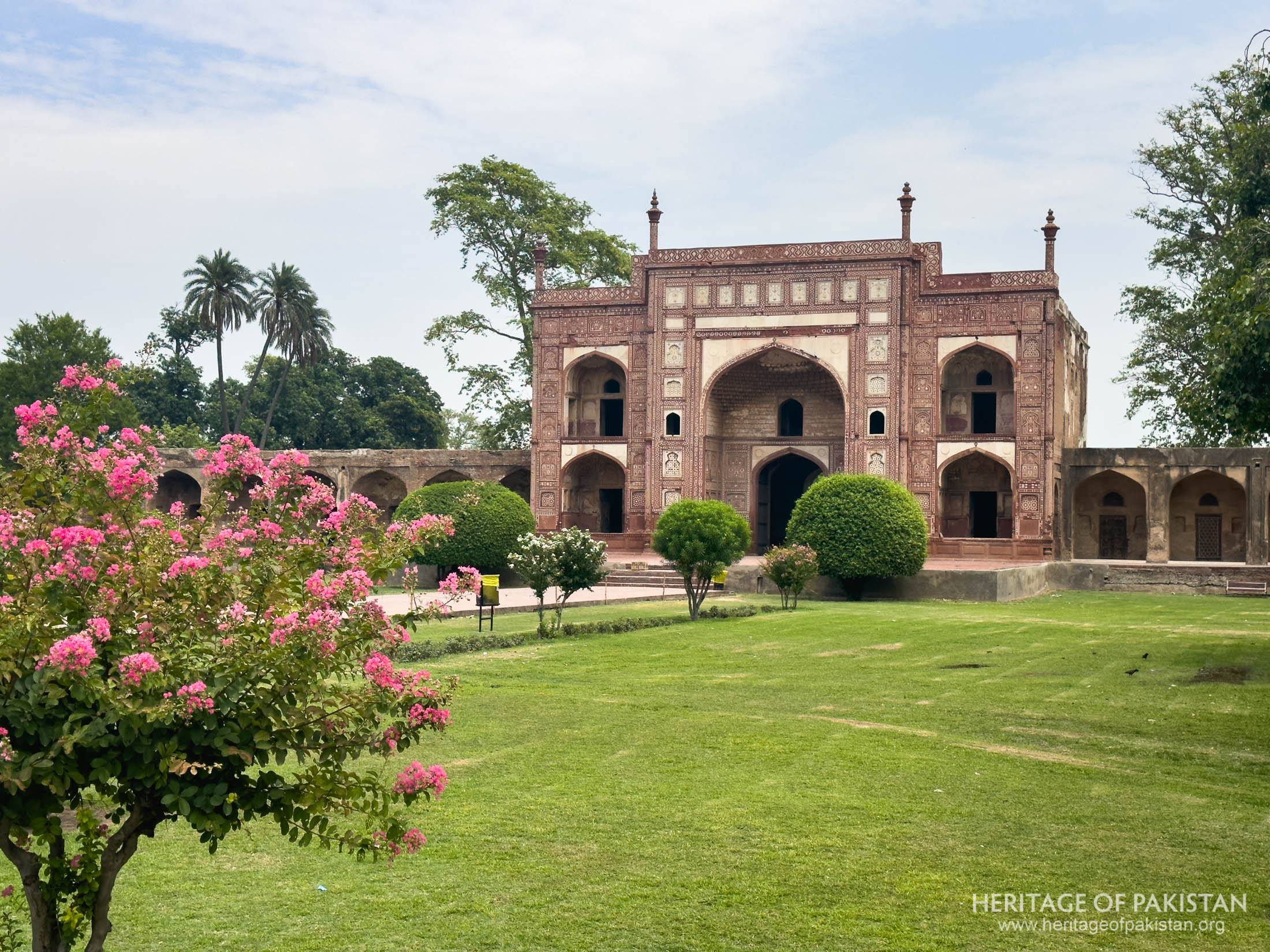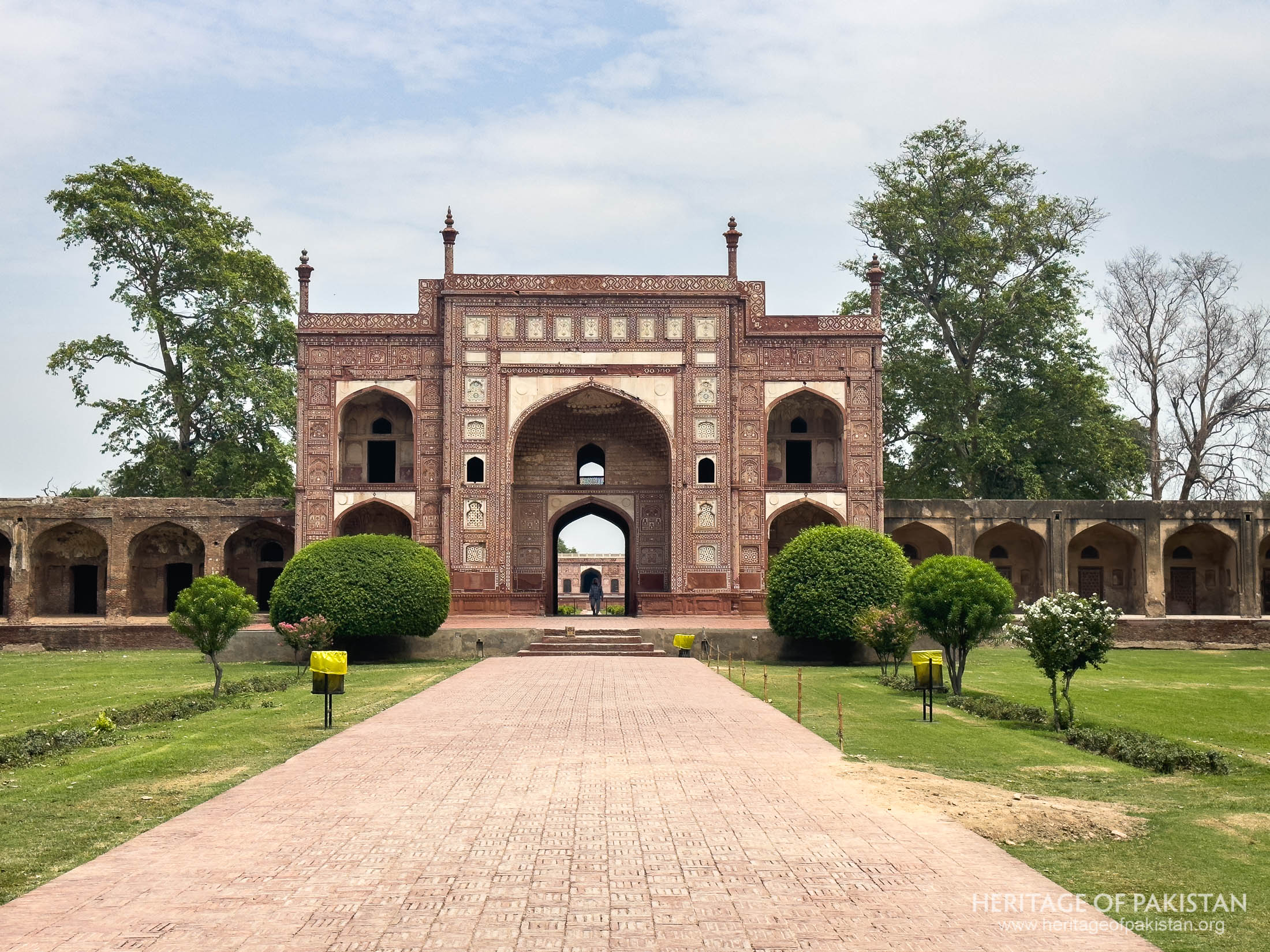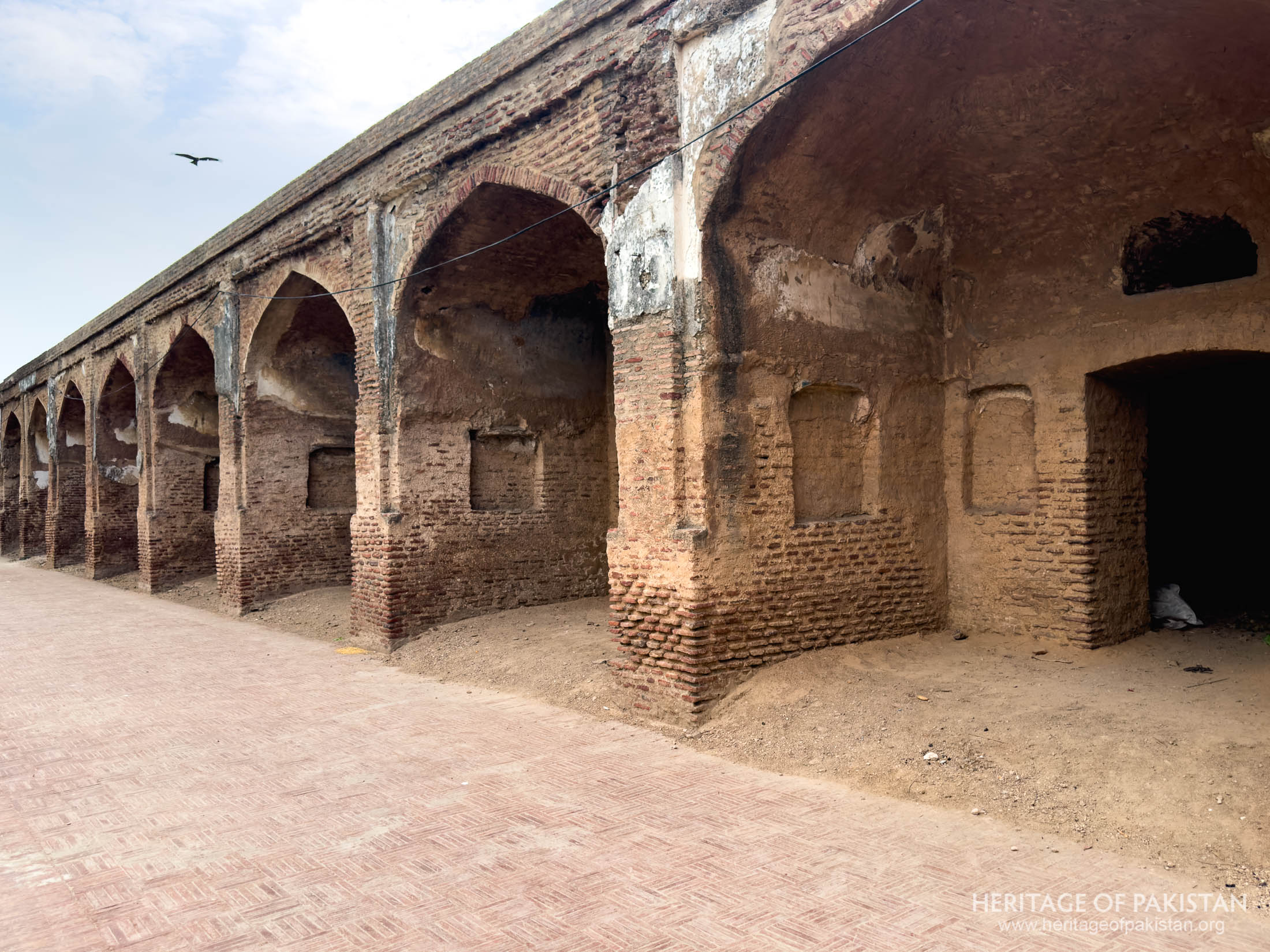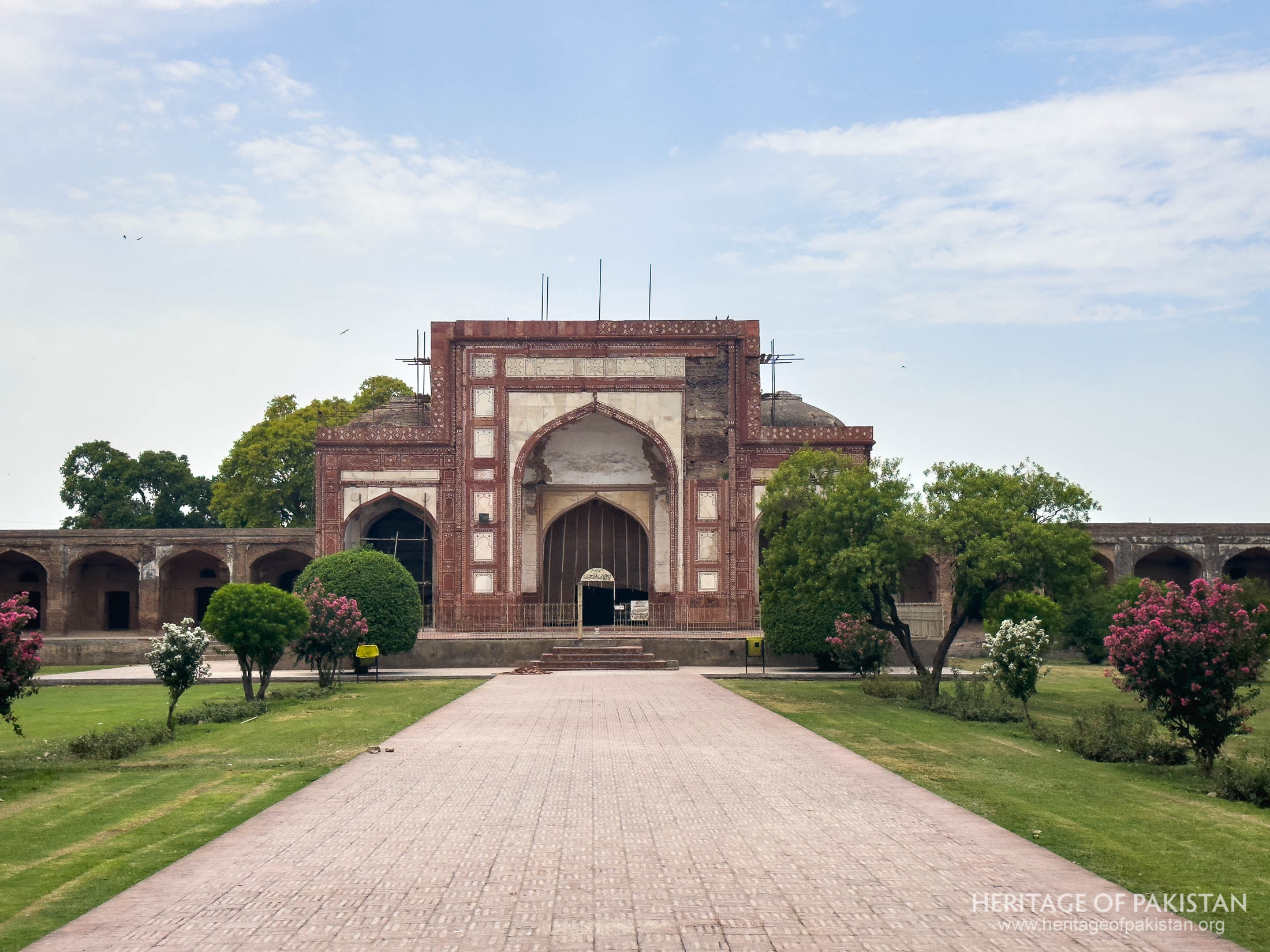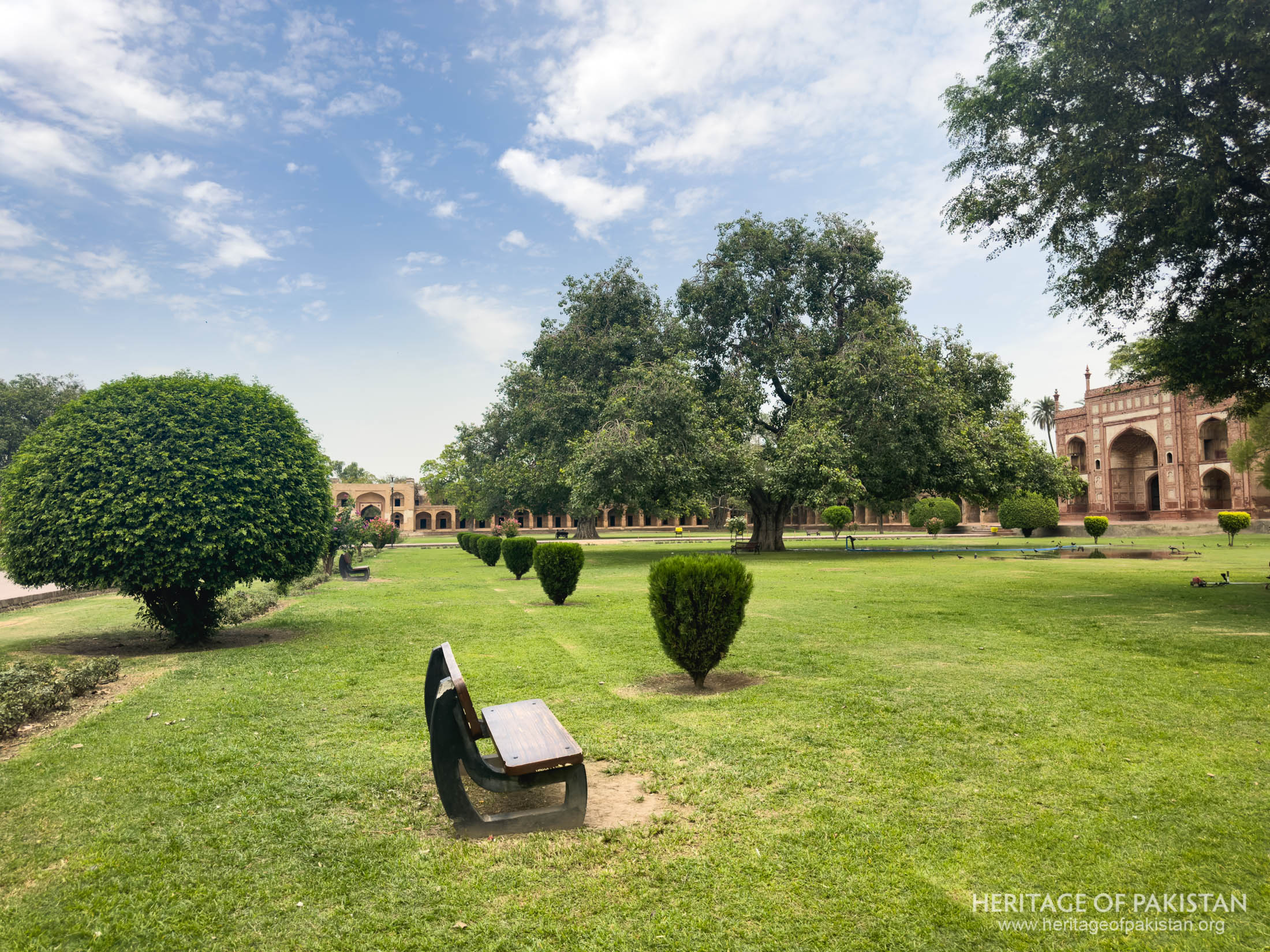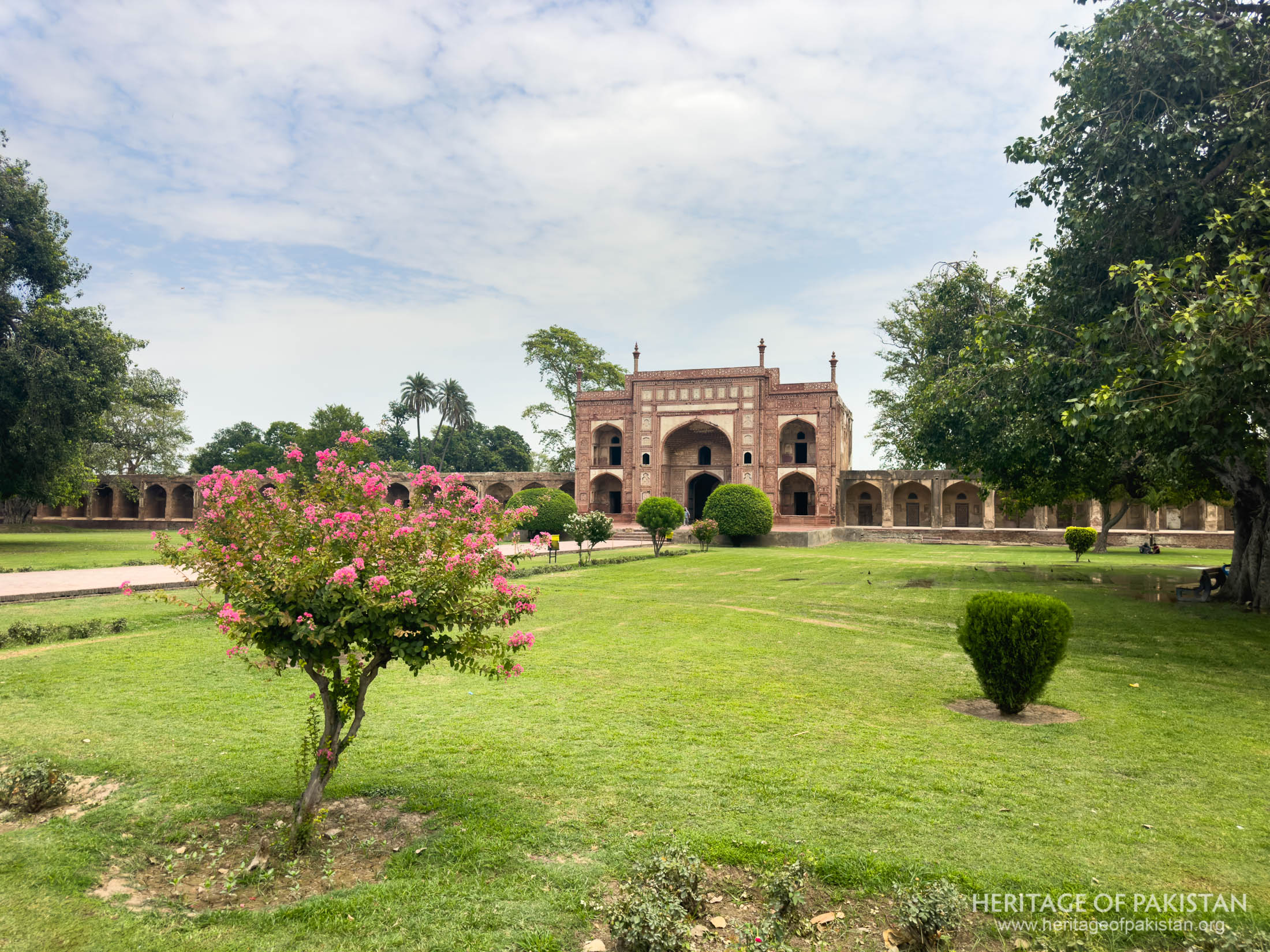Textarea
The Akbari Serai is an expansive Mughal Era court and garden, which serves as an essential introductory space to the tomb of Emperor Jahangir in Shahdara, Lahore.
This enclosure was historically referred to as, Jilau Khana-e-Rauza ("Court Attached to the Mausoleum"), and was designed as a symbolic and functional space leading into the mausoleum complex.
To the east, the gateway leading directly to Emperor Jahangir’s tomb stands as a monumental example of Mughal craftsmanship.
Designed in the traditional Chahar Bagh, or four-part garden style, the Serai exemplifies the Mughal emphasis on symmetry and spatial harmony
This expansive courtyard is bordered on all sides by a raised terrace, on which are constructed 180 small cells, each fronted by a verandah and connected by a common passage.
Reflecting the Mughal Chahar Bagh, or four-part garden style, the Serai embodies the Islamic concept of paradise with its symmetrical layout, lush greenery, and structured pathways.
The cells around the courtyard were used as lodges by travelers visiting the Tomb of Emperor Jahangir
On the Western side of the Serai lies an old mosque which was used by the travelers staying at the Serai
The Akbari Serai is protected under the Antiquities Act 1975 to ensure its preservation for future generations
In recognition of its architectural and historical significance, the Akbari Serai, along with the Tombs of Jahangir and Asif Khan, was inscribed on UNESCO’s tentative list of World Heritage Sites in 1993

